Vampire Survivors entered Steam Early Access in December 2021, and was described by the developer as "a gothic horror casual game with rogue-lite elements." The game skyrocketed to success almost immediately, and at time of writing has over 100,000 Steam reviews and an Overwhelmingly Positive rating.
The game sees you fighting off massive waves of enemies with increasingly powerful abilities. The mix of arcadey action, roguelike randomization, run-based gameplay, and a low price point was a massive success, and, predictably, Vampire Survivors inspired a whole industry of similar titles. Thus we are left with the question: what are the key elements of the genre that exploded into existence with the success of Vampire Survivors?
While many elements were present in earlier games, like Crimsonland in particular, Vampire Survivors was actually inspired by a mobile game named Magic Survival. Whether by refinement of its predecessors' formulae or blind luck, Vampire Survivors has brought these elements to the masses.
Let's call games in this genre horde games. It's not a bad name; you do indeed fight a horde, and it evokes the "survival horde modes" from older shooters; typically an ancillary game mode where players fight to survive as long as possible against impossible odds. How do we define a horde game? Allow me to suggest the following criteria:
- Run-based gameplay where you survive as a single character against hordes of enemies
- Create a build during your run by choosing from randomized abilities and powerups
- A dramatic increase in player power and enemy numbers/difficulty during the run
The primary objective of each run is to survive rather than progress in the traditional sense. There are no checkpoints or levels, but rather different maps to play your run on. There are notable horde games where your run progress through stages, but the stages are weakly differentiated - not comparable to, say, moving to a new stage in Dead Cells. These games also typically have strong meta-progression elements through unlockable characters, stages, and powerups. I am loathe, however, to include meta-progression as a fundamental property of the genre, as one could remove meta-progression from all of these titles and be left with essentially the same game (and besides, what run-based game doesn't have meta-progression these days?).
A crucial element of the horde game is the randomization of power-ups. The classic setup sees you given three or four choices each level-up, with the possibility of re-rolling your choices at some cost. This is the primary roguelike influence, as the random variation forces players to adapt to each run and build a strategy around the random power-ups they have access to. This makes each run feel unique, adding a massive amount of replayability.
Finally, although a little less tangible than the other two criteria, is the idea of rapid growth in player power and enemy difficulty. Indeed, in the description of Vampire Survivors the dev states that the power-ups are there to "rapidly snowball" the player against the enemy hordes. In this way each run feels like a distillation of the power creep of a traditional RPG; you start the run extraordinarily weak, struggling to overcome groups of rats, bats, and slimes, and end the run as a demigod, vanquishing masses of enemies immediately as they appear.
Of course, there are other attributes of horde games. Aesthetically, they are generally top-down, two-dimensional, and somewhat visually simple to keep things manageable when the horde really ramps up. Horde games are also (no doubt thanks to VS) priced extraordinarily affordably: typically 2-3$ USD. Indeed it's possible that, thanks to their high replayability, the Horde game genre offers some the highest average playtime-per-dollar in any genre.
Let's take a brief look at a few of the better genre offerings not called Vampire Survivors.
Nomad Survival

Nomad Survival sticks close to the horde game formula. It plays very similarly to Vampire Survivors, but feels more complex and nuanced. You can learn more active and passive skills and figuring out a good build is crucial to making it past the ten-minute mark. There are some excellent additions to the genre that Nomad Survival brings, including mouse control of your character, fine-tuning of run difficulty, pets, and "heritages" - powerful run modifiers that affect how you play. Find it on Steam.
20 Minutes to Dawn
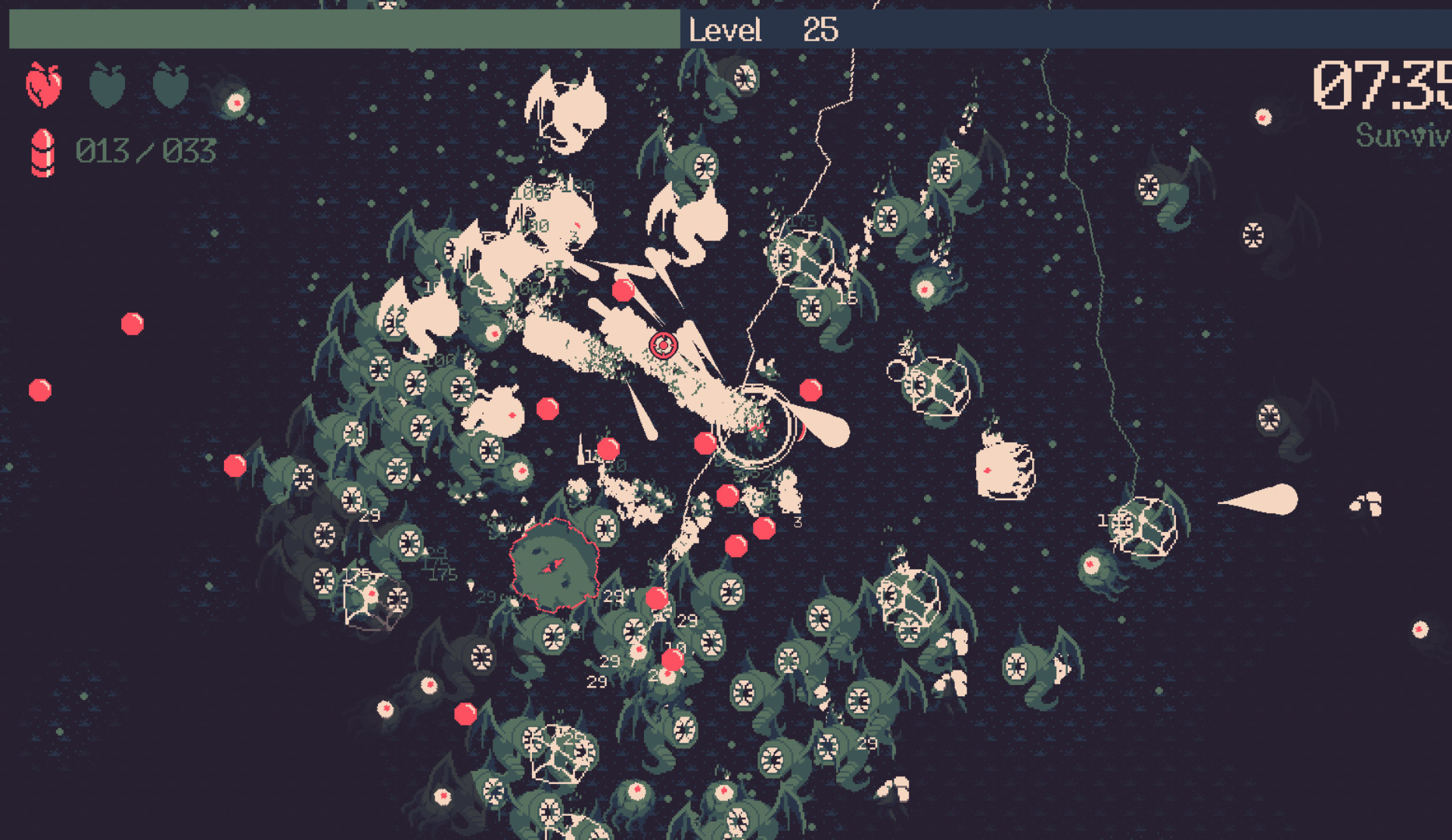
Perhaps the most popular successor to Vampire Survivors is 20 Minutes to Dawn, which we have covered. The primary innovation here is to trade out the typically passive abilities (in the sense that they don't require targeting) with a twin-stick shooter style of gameplay. Upgrades improve the properties of your gun, turning your pea-shooter into a weapon of mass destruction. The dark, high contrast colour palette is nearly monochrome, and an appropriately foreboding synth soundtrack accompanies each run. Find it on Steam.
Boneraiser Minions

A particular favourite of GamingOnLinux, Boneraiser Minions swaps out the character's direct-damage abilities with the ability to raise a host of undead minions that defend your character. The visual aesthetic and audio are excellent, and the minions mechanic notably changes the gameplay to make for a more evasive protagonist than other horde titles. Find it on Steam.
Soulstone Survivors

Soulstone Survivors is a 3d entry into the genre, and a ton of fun. Rather than damage-on-touch, the game telegraphs enemy attacks with danger zones, which I found makes for more forgiving and enjoyable gameplay. There's a ton of status effects you can apply to enemies, and thanks to a great set of 3D animations the combat feels especially satisfying. Try the prelude free on Steam.
In addition to the games mentioned here, we can include Halftime Heroes, Grim Horde, Void Scrappers, Spellbook Demonslayers, and Neophyte as worthy genre entries. There are plenty of games that may not be horde games proper, but feature similar enough gameplay to warrant a mention. Just King and Gunlocked are two excellent games with horde-like gameplay, but stray from the formula in interesting ways.
So what do you think? Have a game to include or criteria to change in our noble pursuit of defining gaming's newest genre?
Of all these games, I think that Grim Horde is, for now, the only one with a native version, but is in early state...
I know Vampire Survivors is supposed to have a native Linux version "some day", I will be waiting then
It has a native version already if you switch to the beta branch in Steam.
I think this genre as a lot in common with bullet hell shooters as it is not so important where and how you shoot, but rather where you move the character.
While you don't actually run, and the game play is indeed different in some key ways. It would be a Horde game, and for sure one of the earliest. There is another game on the Atari 8 bit that I cannot quite recall right now the name, that I swear plays exactly like Vampire Survivor.
Last edited by slaapliedje on 4 Sep 2022 at 10:23 am UTC
Nah. I prefer Wanderbots' name for the genre, "Bullet Heaven." If you controlled a horde then "Horde" would work, but games like Pikmin and Overlord 1&2 would work better for that.
There are Twin Stick shooters (games where you move around on a map, chased by things, but you can aim with a secondary stick, so you can constantly move away from the enemies while shooting them) and then there are 'Flick Stick' shooters, which is what these are. You have to flick the stick in the direction they're coming from to be able to hit them, at least with some/most weapons, as it doesn't aim with the second stick.
Nah. I prefer Wanderbots' name for the genre, "Bullet Heaven." If you controlled a horde then "Horde" would work, but games like Pikmin and Overlord 1&2 would work better for that.
There are Twin Stick shooters (games where you move around on a map, chased by things, but you can aim with a secondary stick, so you can constantly move away from the enemies while shooting them) and then there are 'Flick Stick' shooters, which is what these are. You have to flick the stick in the direction they're coming from to be able to hit them, at least with some/most weapons, as it doesn't aim with the second stick.
Both Spellbook Demonslayers and Nomad Survival allow for second-stick aiming, but there's only a tiny handful of weapons where that's an issue, since most weapons are auto-target, or AOE around you, or a random spot. Some always target in front, or behind, so the aiming weapons occasionally give you some tactical advantages.
To that end, I still think the fourth criteria that really matters is the auto-shoot mechanic.
I love that Nomad Survival even plays on the Twitch runs that VS saw where you're not allowed to move. There's a whole character class that just stands still for the entire run. Quite hard to unlock too, but a fun and extremely tactical way to play these games.
Both Spellbook Demonslayers and Nomad Survival allow for second-stick aiming, but there's only a tiny handful of weapons where that's an issue, since most weapons are auto-target, or AOE around you, or a random spot. Some always target in front, or behind, so the aiming weapons occasionally give you some tactical advantages.
To that end, I still think the fourth criteria that really matters is the auto-shoot mechanic.
I agree, a lot of comments are focusing on the autofiring mechanic to more strongly differentiate from twin stick shooters (eg the people mentioning Robotron). But besides the two you mentioned, 20 Minutes till Dawn is very much twin-stick, and Soulstone Survivors has characters with twin-stick attacks, so I focus more on the other differentiating factors (eg, the roguelike influence). I do like "Single-stick shooter" as a genre descriptor though.
Nah. I prefer Wanderbots' name for the genre, "Bullet Heaven." If you controlled a horde then "Horde" would work, but games like Pikmin and Overlord 1&2 would work better for that.
There are Twin Stick shooters (games where you move around on a map, chased by things, but you can aim with a secondary stick, so you can constantly move away from the enemies while shooting them) and then there are 'Flick Stick' shooters, which is what these are. You have to flick the stick in the direction they're coming from to be able to hit them, at least with some/most weapons, as it doesn't aim with the second stick.
Both Spellbook Demonslayers and Nomad Survival allow for second-stick aiming, but there's only a tiny handful of weapons where that's an issue, since most weapons are auto-target, or AOE around you, or a random spot. Some always target in front, or behind, so the aiming weapons occasionally give you some tactical advantages.
To that end, I still think the fourth criteria that really matters is the auto-shoot mechanic.
I love that Nomad Survival even plays on the Twitch runs that VS saw where you're not allowed to move. There's a whole character class that just stands still for the entire run. Quite hard to unlock too, but a fun and extremely tactical way to play these games.
Ha, so it is sort of like Necromancer!
But yes. I'm convinced the genre these games all belong to is actually a really old one that's been around for ages. Hell, if you think about it Centipede is basically this, but only one direction.
Both Spellbook Demonslayers and Nomad Survival allow for second-stick aiming, but there's only a tiny handful of weapons where that's an issue, since most weapons are auto-target, or AOE around you, or a random spot. Some always target in front, or behind, so the aiming weapons occasionally give you some tactical advantages.
To that end, I still think the fourth criteria that really matters is the auto-shoot mechanic.
I agree, a lot of comments are focusing on the autofiring mechanic to more strongly differentiate from twin stick shooters (eg the people mentioning Robotron). But besides the two you mentioned, 20 Minutes till Dawn is very much twin-stick, and Soulstone Survivors has characters with twin-stick attacks, so I focus more on the other differentiating factors (eg, the roguelike influence). I do like "Single-stick shooter" as a genre descriptor though.
I kind of think of it as 'Flick-Stick' shooter, as you run around and your main weapon tends to only work toward the facing of your character, so you have to flick behind occasionally to whack the things chasing you. Also it rhymes
What specifically separates Horde Games from the more traditional Twin Stick Shooter?
Hmm, I kind of thought the "passive aiming" in Vampire Survivors was a critical part of this new genre.. which would kind of disqualify any games with twin stick aiming (like 20 Minutes to Dawn).. or full 3D aiming like Risk of Rain 2 🤔
I don't know if that's enough to call it a whole different genre though, but yeah I think that makes them distinct.
Only one I've played so Far is Spellbook Demonslayers. And its weapons go in various directions. There is one that fires in front of you, but there's one that fires in a rotating arc, one that fires to left and right, one that fires on all four diagonals, several that make rains of (fire, lightning, toxic icicles) hitting random enemies, one that makes patches of zap that sort of wander around near you, usually crawling towards nearby enemies, a couple that just do multiple homing bullets, and one that actually fires in an arc behind you. So there's no real bias to forward-facing shots.Both Spellbook Demonslayers and Nomad Survival allow for second-stick aiming, but there's only a tiny handful of weapons where that's an issue, since most weapons are auto-target, or AOE around you, or a random spot. Some always target in front, or behind, so the aiming weapons occasionally give you some tactical advantages.
To that end, I still think the fourth criteria that really matters is the auto-shoot mechanic.
I agree, a lot of comments are focusing on the autofiring mechanic to more strongly differentiate from twin stick shooters (eg the people mentioning Robotron). But besides the two you mentioned, 20 Minutes till Dawn is very much twin-stick, and Soulstone Survivors has characters with twin-stick attacks, so I focus more on the other differentiating factors (eg, the roguelike influence). I do like "Single-stick shooter" as a genre descriptor though.
I kind of think of it as 'Flick-Stick' shooter, as you run around and your main weapon tends to only work toward the facing of your character, so you have to flick behind occasionally to whack the things chasing you. Also it rhymes
And as Scaine said there's one you can aim, but when it first comes up they give you a couple of options how to handle it and I just set it to auto-aim at some nearby enemy so I wouldn't have to worry about it. And that's like one weapon out of . . . lots. Many runs you won't even get that one.
Last edited by Purple Library Guy on 5 Sep 2022 at 4:28 am UTC
https://store.steampowered.com/app/2020460/Bring_It_On/
20 Minutes to Dawn was aware of the scope of those kind of games, and was -and still is- free, having the name "10 Minutes to Dawn".
I just know it had native Linux support from day 0, the gameplay it's super smooth, and the game has become pretty balanced.
tl;dr 20 Minutes to Dawn is the hidden gem of all these games

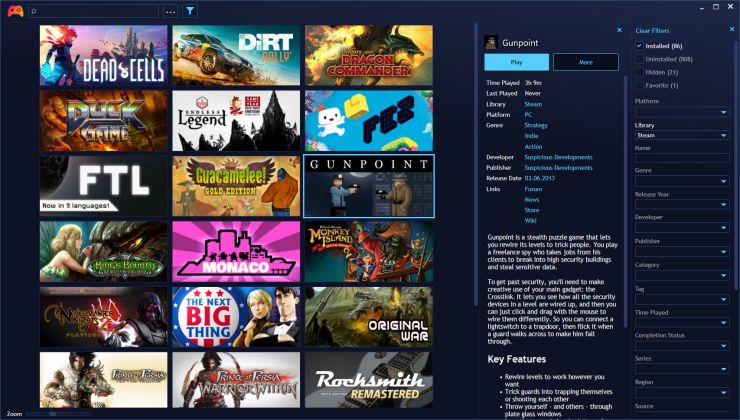
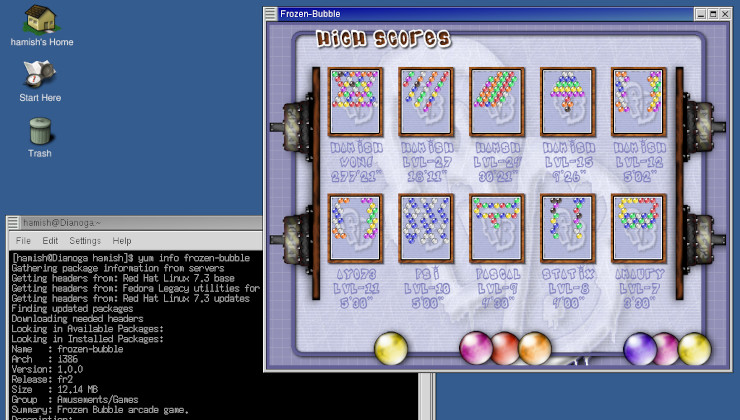
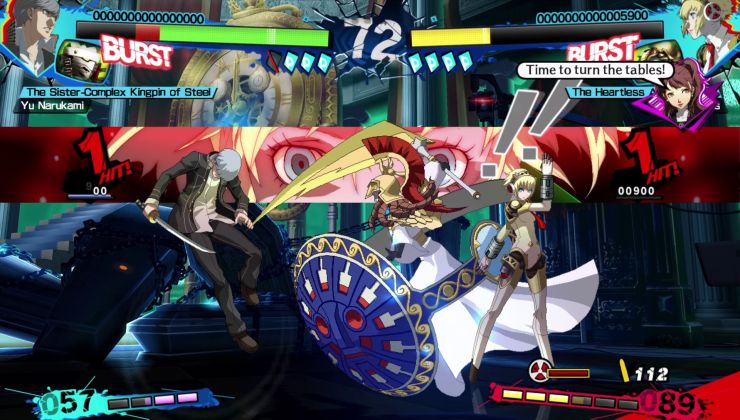
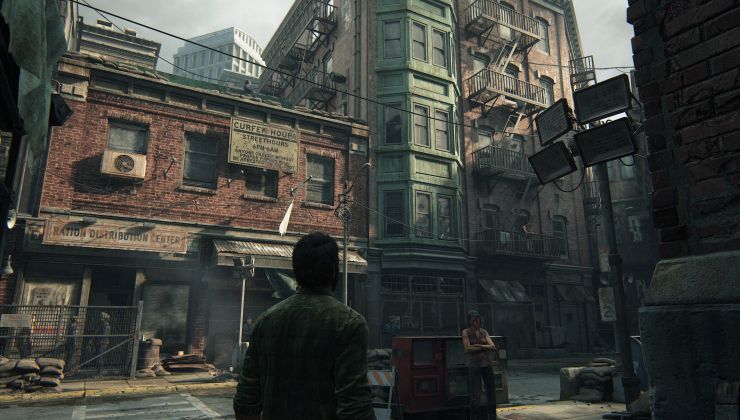





 How to set, change and reset your SteamOS / Steam Deck desktop sudo password
How to set, change and reset your SteamOS / Steam Deck desktop sudo password How to set up Decky Loader on Steam Deck / SteamOS for easy plugins
How to set up Decky Loader on Steam Deck / SteamOS for easy plugins
See more from me